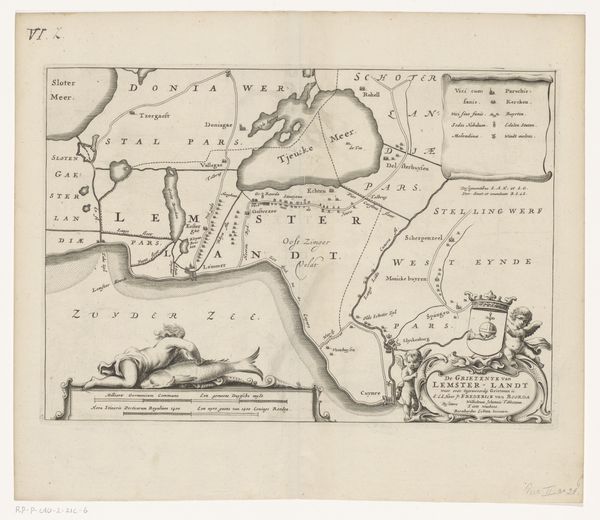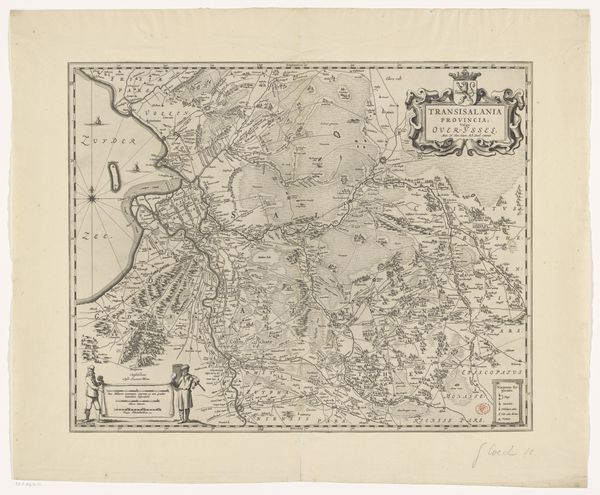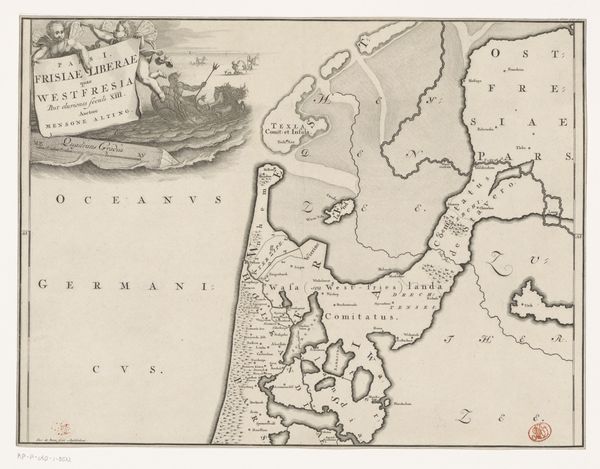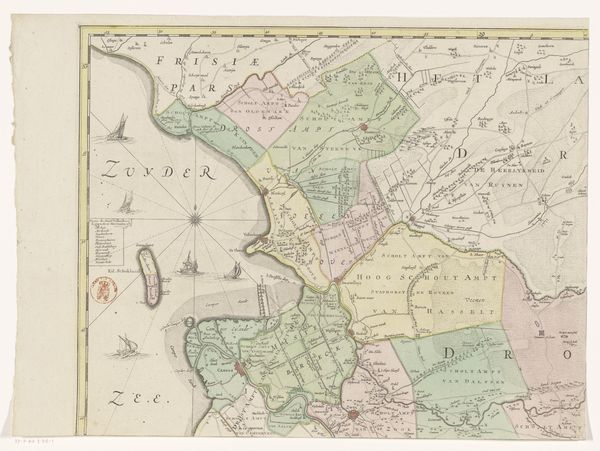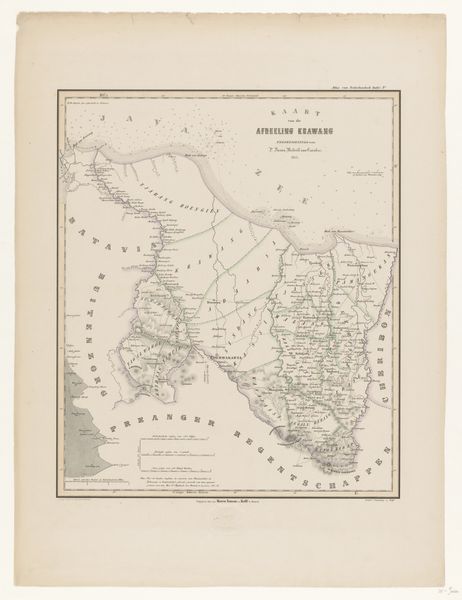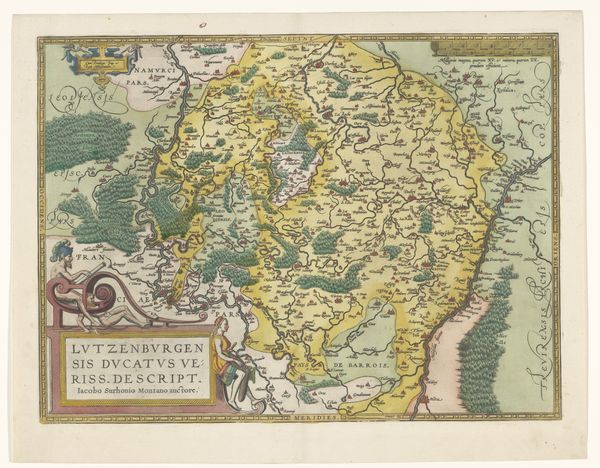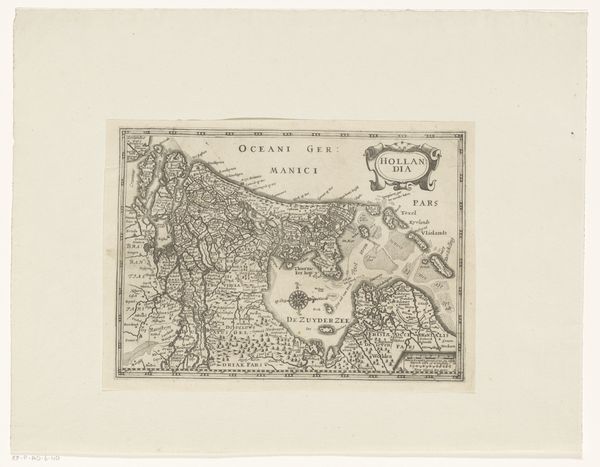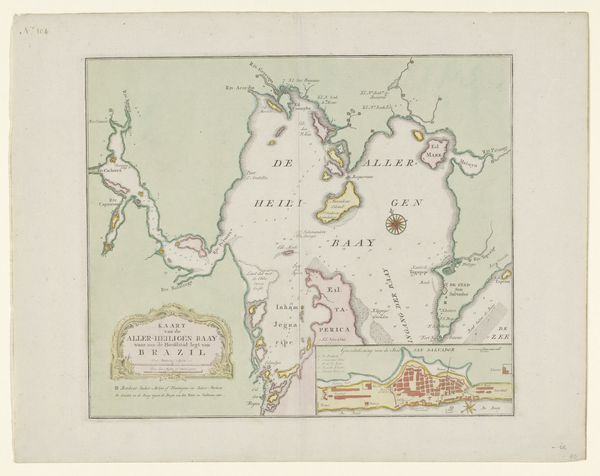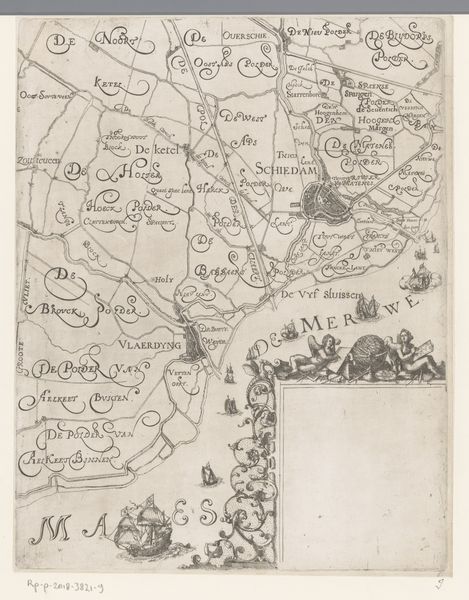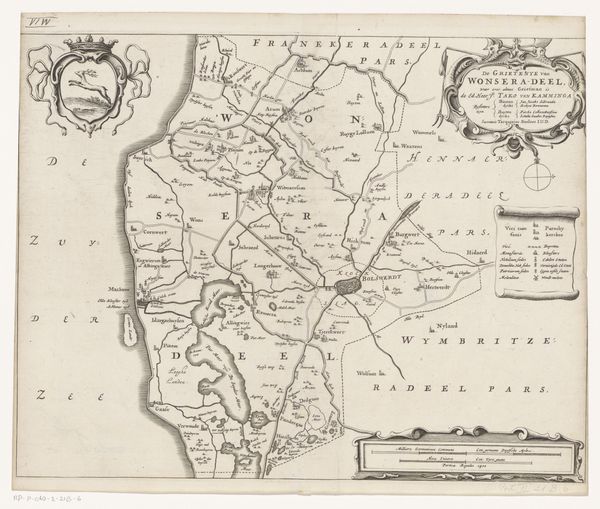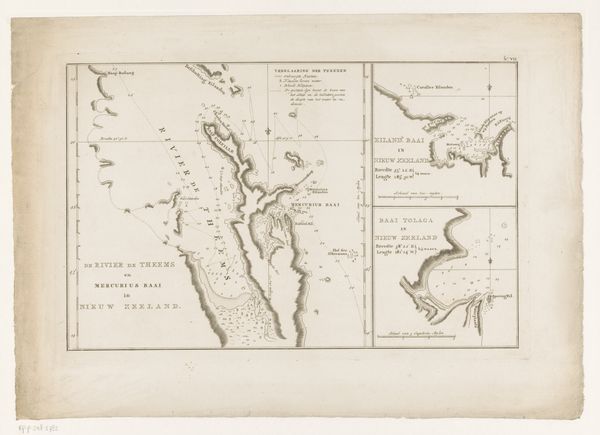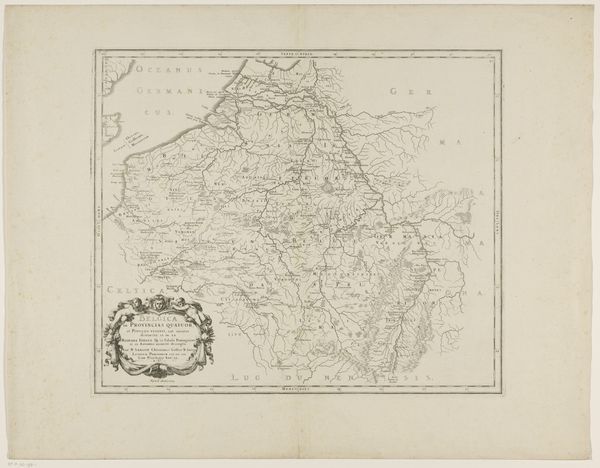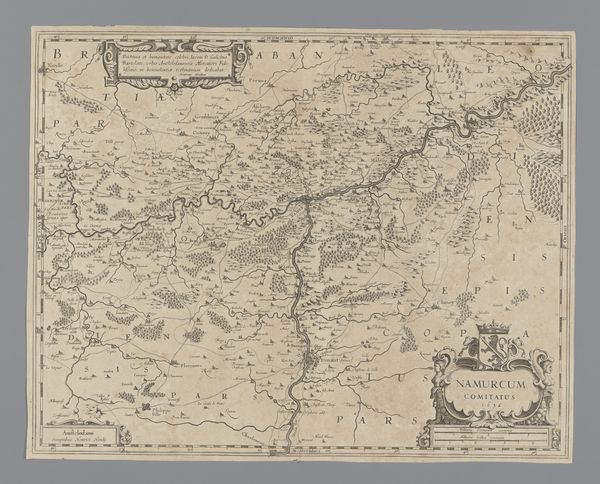
Egypt, from "Court Game of Geography" 1838 - 1855
0:00
0:00
drawing, print
#
drawing
#
aged paper
#
blue ink drawing
#
ink paper printed
# print
#
old engraving style
#
personal sketchbook
#
ink colored
#
sketchbook drawing
#
watercolour illustration
#
storyboard and sketchbook work
#
sketchbook art
Dimensions: 3 3/4 × 2 1/2 in. (9.5 × 6.4 cm)
Copyright: Public Domain
Editor: Here we have "Egypt, from 'Court Game of Geography'," created between 1838 and 1855 by William and Henry Rock. It's a print, seemingly a drawing with blue ink, on what looks like aged paper. The overall effect is… quaint, but the shamrocks bordering the map are a bit odd. How do you read this piece? Curator: Well, let's consider the materials. We see ink on paper, mass-produced as a print, indicating accessibility and wide distribution. It was part of a "game," meaning it had a functional purpose tied to entertainment and perhaps even education about geography. How does framing knowledge as a game change its perception, its consumption? Editor: Interesting. It takes the "work" out of learning, almost like a commodity to be consumed for leisure. But what about those shamrocks? Curator: Exactly! Consider the juxtaposition: a map of Egypt, bordered by Irish symbols. What colonial or political power dynamic is at play when one culture's iconography is superimposed upon another's geographical representation? It speaks volumes about how cartography itself is a construct laden with political intention. Is this a subtle form of cultural appropriation through the act of making? Editor: I hadn't considered that the shamrocks might represent England’s power over Egypt. Curator: Or Ireland's uneasy position *within* that imperial framework. Were the makers trying to hint at this, by any chance? Consider the cost, access and manufacturing locations in the British Empire at the time. The making and distribution of even something that looks innocuous like a children's card game involved networks of laborers, from engravers to merchants. How does understanding those labour conditions change our interpretation? Editor: So, it's not just a map, but a product of very specific historical, material and labour conditions. It adds another layer to my understanding of its meaning. I see this so differently now. Curator: Precisely. Looking closely at production changes everything.
Comments
No comments
Be the first to comment and join the conversation on the ultimate creative platform.
